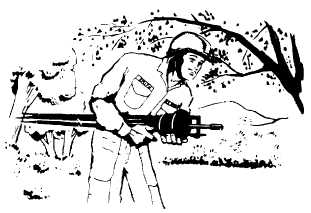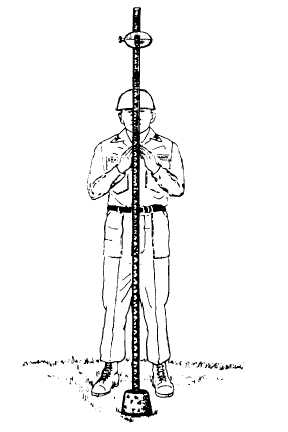Figure 14-4.-Recommended carrying position of instrument
when obstacles may be encountered.
the level and clamp screws slightly. They should
be tight enough to prevent the telescope from
swinging and the instrument from sliding on the
footplate, but loose enough to allow a “give” in
case of an accidental bump against an obstacle.
When you are carrying the instrument over
terrain that is free of possible contacts (for
example, across an open field), you may carry it
over your shoulder like a rifle. But when obstacles
may be encountered, carry the instrument under
your arm, as shown in figure 14-4.
To avoid the effects of sunlight, you should
use a surveyor’s umbrella or the like. If there is
any great difference between the working and
storage temperature, the instrument should be
allowed to adjust itself to the actual working
conditions for about 15 min before observations
are started.
Duties of the Rodman
The rodman must hold the leveling rod
properly in order to sight on it or read it
accurately. This is the rodman’s responsibility.
The actions of a rodman in positioning and
holding the rod will affect the speed and accuracy
of the leveling operation, so if you are the
rodman, use extreme care. It is also the rodman’s
responsibility to take care of the rod during and
after the leveling operation. Your duties as a
rodman are as follows:
1. Clean the base (or shoe) of the rod before
setting the rod on any
of the point to ensure
rod and the point.
point. Also, clean the top
good contact between the
Figure 14-5.-Proper stance for holding a level rod on a
bench mark while facing the instrument.
2. Place the rod firmly on the point; then
stand facing the instrument and slightly behind
the rod; hold the rod in front of you with both
hands (fig. 14-5). Space your feet about 1 ft apart
for a comfortable stance. Also, make sure that
the graduations of the rod are right side up and
are turned towards the instrumentman.
3. Hold the rod as nearly vertical as possible,
then place a rod level against the rod, and move
the top end of the rod until the bubbles are
centered. If you do not use a rod level, balance
the rod by using your fingertips to prevent it from
falling. A properly balanced rod will stand for
several seconds before starting to fall. This
process of balancing the rod vertically is known
as PLUMBING THE ROD.
4. Plumb the rod and hold it as steady as
possible during strong winds. When this condition
exists, the instrumentman may call for you, as the
rodman, to WAVE THE ROD. Wave the rod by
pivoting it on its base and swinging it in a slow
arc toward the instrument and away. Keep the
shoe firmly seated during this operation. The
14-6



